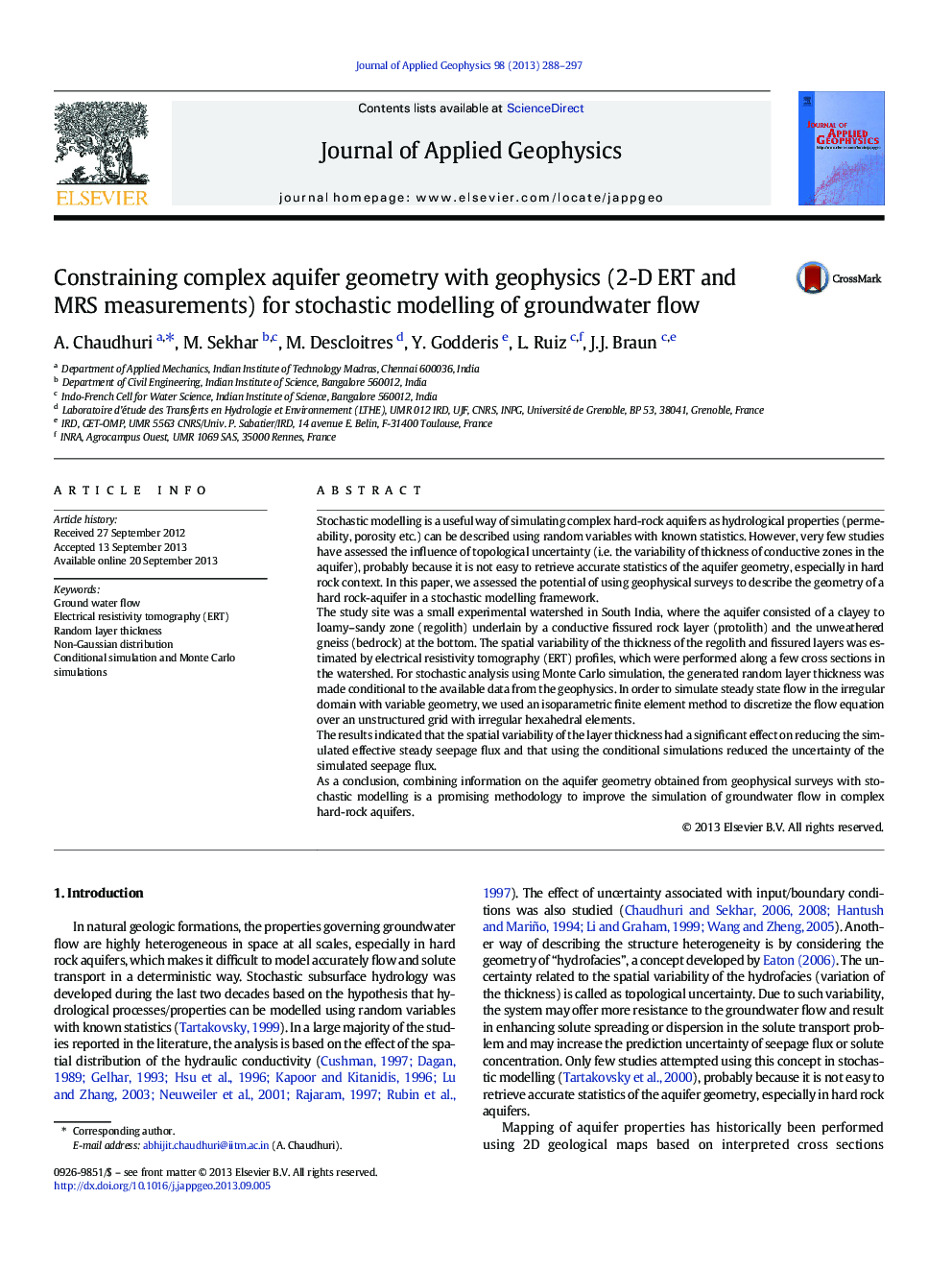| Article ID | Journal | Published Year | Pages | File Type |
|---|---|---|---|---|
| 4740285 | Journal of Applied Geophysics | 2013 | 10 Pages |
•Groundwater flow in heterogeneous gneissic aquifer aided by 2D geophysical surveys•Thickness of the fissured zone and overlying regolith are estimated from ERT data.•Spatially varying layer thickness are conditioned by the 2D ERT survey data.•Probabilistic analysis of underwater flux by Monte Carlo simulation.•Uncertainty of underflow decreases as more ERT data are used for conditioning.
Stochastic modelling is a useful way of simulating complex hard-rock aquifers as hydrological properties (permeability, porosity etc.) can be described using random variables with known statistics. However, very few studies have assessed the influence of topological uncertainty (i.e. the variability of thickness of conductive zones in the aquifer), probably because it is not easy to retrieve accurate statistics of the aquifer geometry, especially in hard rock context. In this paper, we assessed the potential of using geophysical surveys to describe the geometry of a hard rock-aquifer in a stochastic modelling framework.The study site was a small experimental watershed in South India, where the aquifer consisted of a clayey to loamy–sandy zone (regolith) underlain by a conductive fissured rock layer (protolith) and the unweathered gneiss (bedrock) at the bottom. The spatial variability of the thickness of the regolith and fissured layers was estimated by electrical resistivity tomography (ERT) profiles, which were performed along a few cross sections in the watershed. For stochastic analysis using Monte Carlo simulation, the generated random layer thickness was made conditional to the available data from the geophysics. In order to simulate steady state flow in the irregular domain with variable geometry, we used an isoparametric finite element method to discretize the flow equation over an unstructured grid with irregular hexahedral elements.The results indicated that the spatial variability of the layer thickness had a significant effect on reducing the simulated effective steady seepage flux and that using the conditional simulations reduced the uncertainty of the simulated seepage flux.As a conclusion, combining information on the aquifer geometry obtained from geophysical surveys with stochastic modelling is a promising methodology to improve the simulation of groundwater flow in complex hard-rock aquifers.
